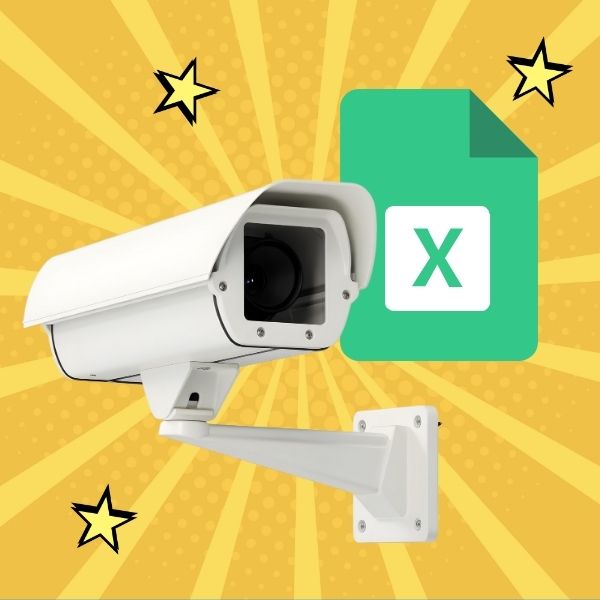
We break down the essential fields every CCTV excel report needs for inventory and storage management and how to automate...
Ever tried to troubleshoot a security system that feels like a patchwork quilt of brands, firmware versions, and management tools?
We recently spoke to a security admin at a major university who inherited a system like this.
He described the challenge of managing a setup where people were “buying things willy-nilly,” without any consistency or compatibility in mind.
The result?
Firmware updates were a headache, downtime was a frequent visitor, and the tech stack was anything but user-friendly.
Standardizing your camera brands isn’t just about picking favorites; it’s about building a reliable, efficient, and scalable system.
Here are 5 reasons to help you make the case for standardizing your camera brands during your next budget discussions…
When your cameras, servers, and software are from the same brand, troubleshooting and updates become far simpler.
Brands like Axis, Hanwha, and Bosch offer management tools that enable bulk firmware updates across all devices with just a click or two.
In mixed-brand setups, however, firmware updates often require juggling multiple tools or even manual updates for each device—leading to errors and downtime.
By standardizing on a single brand with robust management software, you minimize these headaches.
While off-brand or low-cost options may be tempting, they often lack bulk-update capabilities, making standardized, brand-supported solutions a worthwhile investment for long-term ease and efficiency
Training new team members on a single, standardized system is a breeze compared to piecing together knowledge across brands.
Take Axis’s Zipstream technology as an example.
With a standardized setup, your team can focus on learning this specific tool, becoming experts in its usage and functionality.
But if you’re juggling multiple camera brands, you might need to train on Hanwha’s WiseStream or, heaven forbid, deal with the absence of a smart codec. Ugh.
When your team only has to learn one system, they become pros faster, respond better, and make fewer mistakes.
This isn’t just a time-saver—it’s a stress-saver too.
Standardization reduces the cognitive load for your team, letting them focus on actual security management, not tool management.
Having multiple camera brands can make firmware updates even more tedious than they already are.
And trust us, your security system is not the place to procrastinate updates.
With a standardized system, you can roll out firmware and security patches across all devices in one fell swoop.
No more chasing down that one outdated camera causing vulnerabilities, or hoping a third-party patch will work with every brand in your system.
A single, unified stack means you’re always up-to-date, and there are no weak links.
Standardization keeps your security tight, predictable, and free from preventable issues.
Troubleshooting an issue is hard enough. Add in coordinating support with multiple vendors and you’ll be bald in no time.
When you only have one camera brand, you only have to deal with one support team.
This means faster resolutions, less back-and-forth, and vendor relationships feel like actual partnerships.
We cannot emphasize the importance of this “partnership” perk enough.
Having this type of working relationship with your technology vendor gives you a trusted resource for future planning and troubleshooting when issues come up.
Standardizing your camera brands doesn’t just solve today’s problems; it prepares you for tomorrow’s growth.
When your tech stack is consistent, expanding becomes plug-and-play rather than plug-and-pray.
New buildings or additional cameras integrate smoothly, and you know they’ll work because they’re part of the same ecosystem.
And if you have the partnership-style relationship with your vendor that we mention above, simply looped in his vendor to discuss best practices and future-proofing, bringing them into the loop as true partners.
Standardizing your camera brands isn’t about putting all your eggs in one basket; it’s about setting your team up for success.
From faster troubleshooting to more reliable security and simplified scaling, a standardized system is a powerful tool for security admins ready to make their lives easier.
The benefits are tangible—less time wasted, fewer headaches, and, ultimately, more secure systems. And who doesn’t want that?
It’s the newsletter security professionals use to work smarter. We promise you’ll learn stuff and enjoy a few blissful moments of productive procrastination.

Your go-to XProtect eXPerts. We learn the technical stuff that will save you time and make it less boring.

Your go-to XProtect eXPerts. We learn the technical stuff that will save you time and make it less boring.

We break down the essential fields every CCTV excel report needs for inventory and storage management and how to automate...

Managing over 240 cameras across a growing city isn’t easy—especially when one person is responsible for it all. See how...

This step-by-step guide shows you how to access Milestone XProtect from anywhere using Tailscale. It’s secure, simple, and way less...
Subscribe to get a monthly dose of security & surveillance industry news and insights, Milestone VMS time-saving tricks, tips for hacking your way out of boring work sent directly to your inbox!